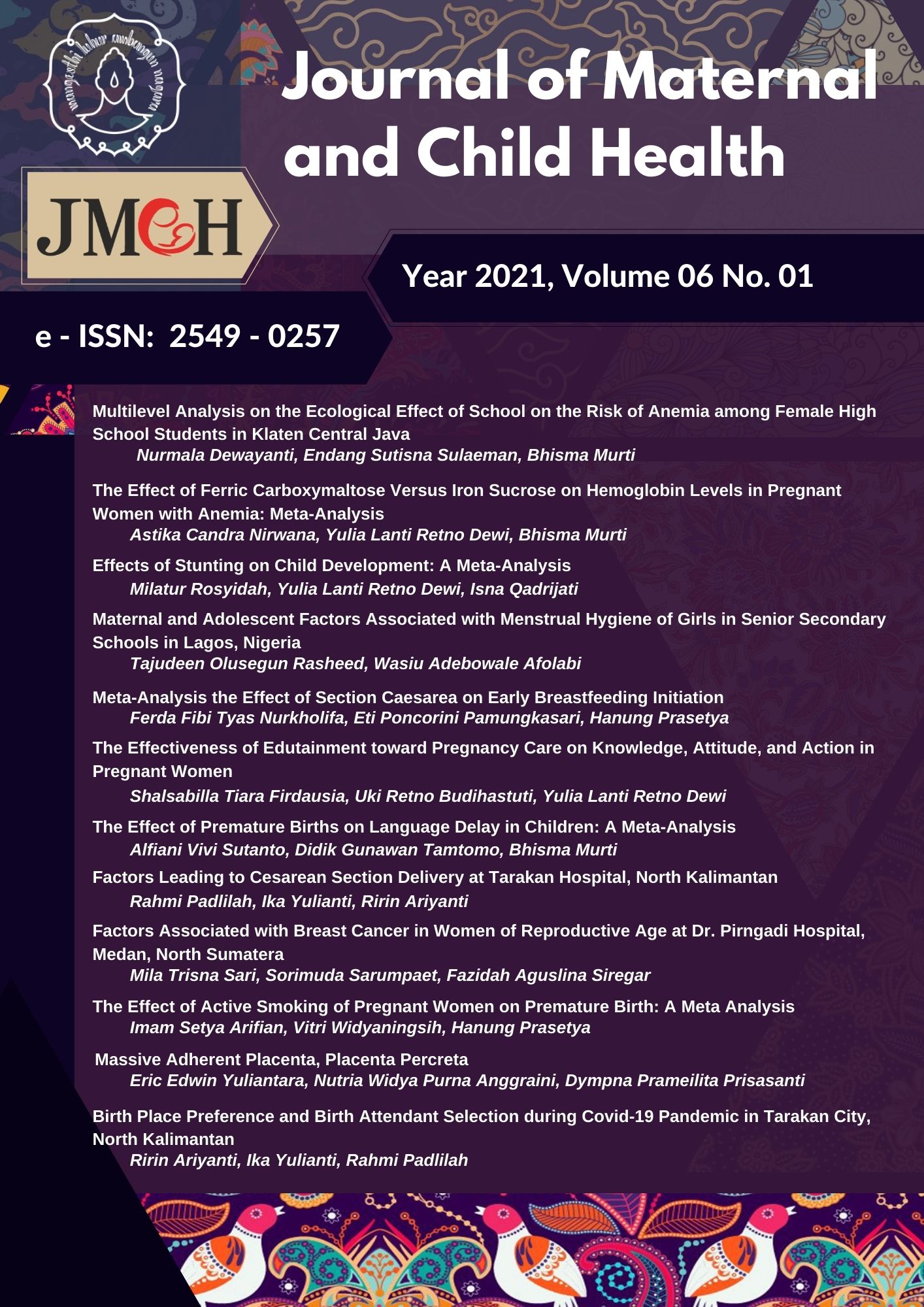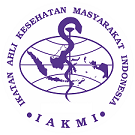The Effect of Ferric Carboxymaltose Versus Iron Sucrose on Hemoglobin Levels in Pregnant Women with Anemia: Meta-Analysis
Abstract
Background:
References
Bekele A, Tilahun M, Mekuria A (2016). Prevalence of anemia and its associated factors among pregnant women attending antenatal care in Health Institutions of Arba Minch Town, Gamo Gofa Zone, Ethiopia: A CrossSectional Study. Anemia. 2016: 1073192. https://doi.org/10.1155/2016/1073192.
Bilimale A, Anjum J, Sangolli HN, Mallapur M (2010). Improving adherence to oral iron supplementation during pregnancy. Maternal Health, Nutrition, Anae-mia. 3(5): 281-290. https://doi.org/10.4066/AMJ.2010.291
Camaschella C (2015). Iron-deficiency ane-mia. New England Journal of Medicine.372(19): 1832
Christoph P, Schuller C, Studer H, Irion O, De Tejada BM, Surbek D (2012). Intra-venous iron treatment in pregnancy: Comparison of high-dose ferric carbo-xymaltose vs. iron sucrose. Journal of Perinatal Medicine, 40(5): 469
Gogoi I, Mahanta TG, Sarma PR, Gogoi PP, Saikia H (2016). Prevalence and socio-demographic factors affecting anaemia in pregnant women of Dibrugarh district, Assam, India. Indian Journal of Community Health, 28(2): 202
Jose A, Mahey R, Sharma JB, Bhatla N, Saxena R, Kalaivani M, Kriplani A (2019). Comparison of ferric carboxy-maltose and iron sucrose complex for treatment of iron deficiency anemia in pregnancy-randomised controlled trial. BMC Pregnancy and Childbirth, 19(1): 1-8. https://doi.org/10.1186/s12884-019-2200-3.
Khaskheli M, Baloch S, Baloch AS, Baloch S, Khaskheli FK (2016). Iron deficiency anaemia is still a major killer of preg-nant women. Pakistan Journal of Medi-cal Sciences. 32(3): 630
Mahajan AR, Bhagat B, Gupta S, Mahajan B, Verma M (2018). A comparative study of efficacy and safety of intravenous ferric carboxymaltose versus iron su-crose in the treatment of iron deficiency anaemia of pregnancy in a tertiary care hospital. International Journal of Reproduction, Contraception, Obstetrics and Gynecology, 7(5): 1938. https://dx.doi.org/10.18203/2320-1770.ijrcog-20181933.
Murti B (2018). Prinsip dan metode riset epidemiologi. Edisi IV. Surakarta: Bin-tang Fajar Offset.
Naqash A, Ara R, Bader GN (2018). Effecti-veness and safety of ferric carboxy-maltose compared to iron sucrose in women with iron deficiency anemia: phase IV clinical trials. BMC Women
Neogi SB, Devasenapathy N, Singh R, Bhus-han H, Shah D, Divakar H, Baswal D (2019). Safety and effectiveness of intravenous iron sucrose versus stan-dard oral iron therapy in pregnant women with moderate-to-severe anae-mia in India: a multicentre, open-label, phase 3, randomized, controlled trial. The Lancet Global Health, 7(12): e1706
Patel R, Delivala K, Bhatt S (2019). Paren-teral iron treatment in pregnancy: comparision of high-dose ferric carbo-xymaltose vs. iron sucrose. 8(9): 46
Pavord S, Myers B, Robinson S, Allard S, Strong J, Oppenheimer C (2012). UK guidelines on the management of iron deficiency in pregnancy. British Journal of Haematology. 156(5): 588
Qassim A, Mol, BW, Grivell RM, Grzeskowiak LE (2018). Safety and efficacy of intravenous iron polymaltose, iron sucrose and ferric carboxymaltose in pregnancy: A systematic review. Australian and New Zealand Journal of Obstetrics and Gynecology, 58(1): 22
Rahman MM, Abe SK, Rahman MS, Kanda M, Narita S, Bilano V, Ota E, et al (2016). Maternal anemia and risk of adverse birth and health outcomes in low and middle-income countries: systematic review and meta-analysis. Am J Clin Nutr. 103(02): 495
Reveiz L, Gyte GM, Cuervo LG, Casasbuenas A (2011). Treatments for iron deficiency anaemia in pregnancy. Cochrane Data-base of Systematic Reviews. (2): CD0-03094. https://doi.org/10.1002/14651858.cd003- 094.pub3.
World Health Organization. (2014). World Health Statistic. Geneva: WHO.




